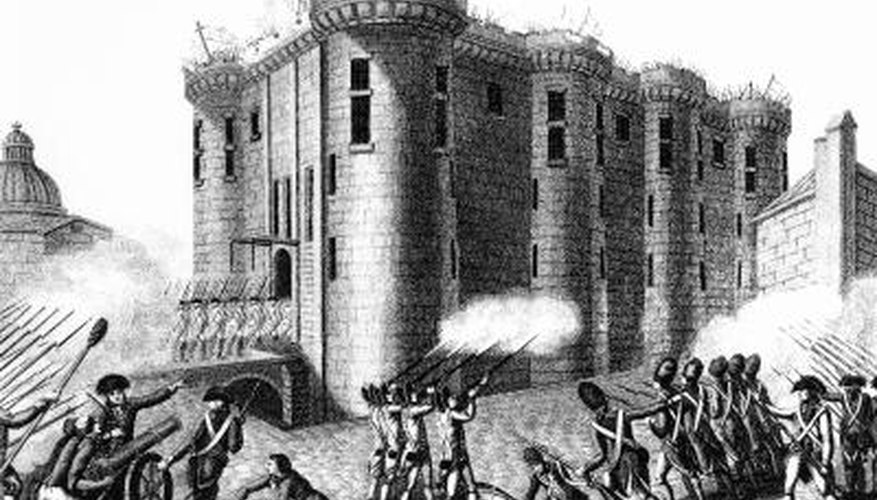In pre-revolutionary France, the Bastille was symbolic of an old regime that many French people were dissatisfied with. The storming of the Bastille prison would be the first victory of the revolutionaries. Although the immediate effects of this event were relatively small in scale, the symbolic effects were far more significant. Today, this victory is celebrated in France each year on the national holiday known as Bastille Day.
The Bastille
In 18th century Paris, the Bastille had become an established prison used by the king of France to remove political prisoners, among others, from society and prevent them from spreading subversive political ideas. This led to the construction of the prison, which was originally built to guard Paris from foreign attack, becoming a symbol of the king's absolute power over the people of France.
Events
A group of disaffected Parisian tradesmen and revolutionaries formed a plan to invade the Bastille on July 14, 1789, in order to release the prisoners and seize the guns and gunpowder held within the building. When the mob attempted this, the governor of the Bastille, the Marquis de Launay, began negotiations with a few of the men, believing that he would soon be rescued. Revolutionaries entered the Bastille shortly afterward and guards fired at them. However, when the troops that were intended to support the governor arrived, they switched sides and fought with the revolutionaries, increasing the power of the mob and resulting in their victory.
- A group of disaffected Parisian tradesmen and revolutionaries formed a plan to invade the Bastille on July 14, 1789, in order to release the prisoners and seize the guns and gunpowder held within the building.
- When the mob attempted this, the governor of the Bastille, the Marquis de Launay, began negotiations with a few of the men, believing that he would soon be rescued.
Immediate Effects
One of the initial effects of the storming of the Bastille was more than 100 deaths. Among these was the Marquis de Launay, whose head was cut off and paraded around Paris. Prisoners in the Bastille were freed, although only seven of them were in the prison at the time of the attack, and about 28,000 guns were taken by revolutionaries. No gunpowder was found in the Bastille. King Louis XVI was not aware of the events until the following morning.
- One of the initial effects of the storming of the Bastille was more than 100 deaths.
- Among these was the Marquis de Launay, whose head was cut off and paraded around Paris.
Symbolism
The major effects of the storming of the Bastille were symbolic. The storming of the Bastille, and the complete destruction of it shortly afterward, symbolised the first victory of the French people over the ancient regime, the political system that gave the monarch and a few aristocrats total authority over the people of France. This achievement led to the prospect of revolution being taken far more seriously. Shortly after the Bastille events, French aristocrats began to flee the country, the blue, white and red tricolour rosette was adopted by revolutionaries and the Declaration of the Rights of Man and Citizen, defining the rights of all people, was drawn up.
- The major effects of the storming of the Bastille were symbolic.
- The storming of the Bastille, and the complete destruction of it shortly afterward, symbolised the first victory of the French people over the ancient regime, the political system that gave the monarch and a few aristocrats total authority over the people of France.
Start of the Revolution
Symbolically, the storming of the Bastille signalled the beginning of a French Revolution. After July 14 1789, events gathered speed and a revolution was started that would result in King Louis XVI admitting defeat, the French monarchy being overthrown and a new republic being established in its place.
